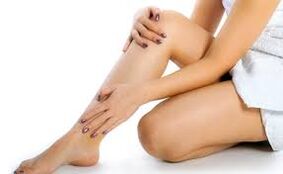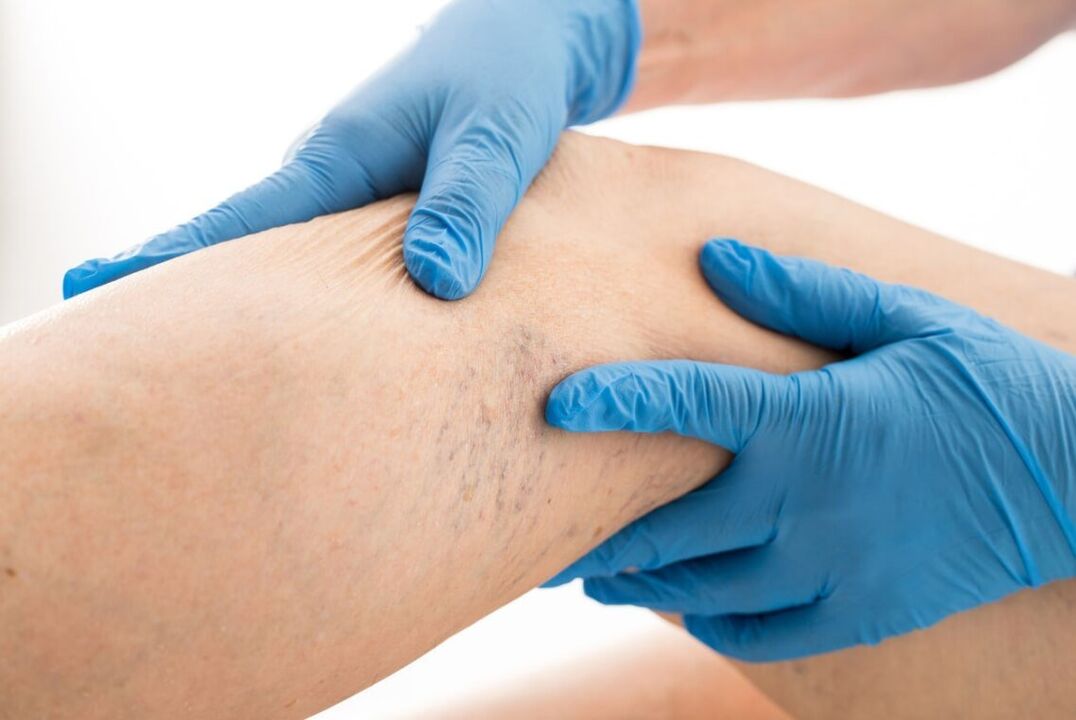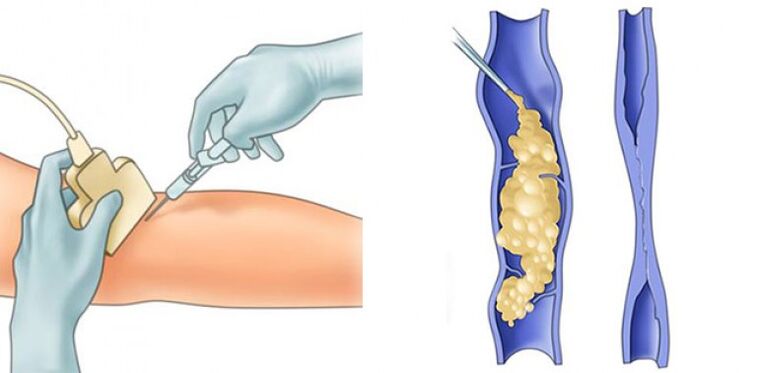Risk factors for varicose vein development
- Heredity.
- Pregnancy is traditionally considered one of the main risk factors for the development of varicose veins, more common (3-4 times) damage to women.
- Obesity is a proven risk factor for varicose veins.At the same time, increasing the body weight index to 27 kg / m2 and more leads to an increase in the frequency of diseases by 33%.
- Lifestyle has a significant impact on the development and course of varicose veins.A particularly negative effect of a longer static load in the weight of lifting or steady stay in standing position and sitting
- On the course of varicose veins, near underwear, different clamps that increase intra -abrous pressure have harmful effects.
- The high frequency of varicose veins in industrialized countries is due to the food characteristics.The high degree of food processing and reduction in crude vegetables and fruit has led to a permanent lack of plant fibers needed to rearrange the venous wall and chronic prison, which cause a permanent increase in intra -abrod.
- The terrible conditions are included in the pathogenesis of varicose veins.Their role in recent years is gradually increasing, which due to the wide use of hormonal contraception, popularization of hormone replacement therapy during the occurrence of menopause and the treatment of osteoporosis.It has been proven that estrogen and progesterone, as well as their derivatives, reduce the tone of the venous wall due to gradual destruction of collagen and elastic fibers.

Clinical picture of varicose veins
Varicose veins- It is a disease that is not indifferent to beautiful sex.Varicose veins of female veins are ill on average three times more often than men.
Signs of varicose vein- Movement expansions of subcutaneous veins, pain, weight in legs, swelling of the foot and lower leg, fatigue in the legs by the end of the day.Varicose nodes are often prone to form blood clots and infections.Phelebitis can develop - inflammation of blood vessels orthromboflebitis- Inflammation of vessels complicated with blood clots.In the course of the veins, they are claimed, very painful cables.The skin changes, loses elasticity and color - becomes thick, dark brown.Sores appear with a simple injury.A young woman can become a person with a disability between the ages of 40.
One of the serious complications of varicose veins is a thrombophlebitis - a process in which the thrombus is with subsequent inflammatory forms on the inner wall of the vein.This pathology is dangerous that the blood clot can get off with blood flow to enter the pulmonary artery (Tel - pulmonary artery thrombolism) and lead to a person's death.That is why varicose veins are a dangerous disease that has to be treated.
Symptoms of varicose veins (these are symptoms should be careful):
1. pain.
The causes of pain in varicose veins are very, very numerous.A variety of pain in varicose veins is also very rich:
- Hot pulsating pain,
- Night cramps and itching in muscles,
- Pain when walking
- Pain along the vein troops,
- General pain and jmarki in legs
2. Swelling in legs.
3. A feeling of shooting and severity in your legs.
4. Changes in the skin.At first, the skin becomes dry, pigmentation appears - the skin of the leg darkens, covered with brown "spots."Later, various dermatitis, eczema and thus - the corded trophic disorders in the form of weak wounds of the wound to the formation of ulcers can join these symptoms.
5. Bent, elongated varicose veins protruding above the surface of the legs and feet, cylindrical or mixed extensions.
6. Vascular stars (telangioetassium).Yes, people with varicose veins are also involved in a group of patients with the spread of small veins, because the causes of their appearance are the same.
The earliest phases of varicose veins development is very difficult to detect and diagnose, because in very early stages of the disease there is no main characteristics - varicose veins.And the first and earliest symptoms of varicose veins, like a sense of leg severity, moderate leg pain, increased fatigue, are also found in the initial phases of arterial diseases, straight feet, lumbar osteochondrose.In such difficult cases, it is impossible to make the exact diagnosis itself - you will need a consultation of doctors or even a few experts - fleet, neurologists, surgeons and manual therapists.Large instrumental diagnostic methods will also be needed, such as ultrasound, will also need.
In phlebology, such symptoms are associated with the beginning of the pathological flow of blood through deep veins.
Most often, the first signs of varicose veins in the spring, when you can change the wardrobe, but it is not known where the venous "forms" came from the legs, legs and hips.The leg is deformed, becomes blue and ugly.
The first symptoms of varicose veins, with whom you yourself cannot be suspected at the beginning of varicose veins, increasing is a sample of veins on the skin of the leg.This defect, as already mentioned, usually noticed young women: He noticed wreaths on his feet or hips, which were not there before.
And often, such symptoms of starting varicose disease precede the appearance of pain and other unpleasant sensations.Often the first "findings" of the vein do not follow absolutely without unpleasant sensations.
Women are worried about this vascular network only as a cosmetic defect.Such patients are often if they turn to experts and then just to remove cosmetic discomfort.
If you have thin and pale skin, then the first symptoms of the start of varicose veins are especially clearly visible.These are thin veins that don't even protrude above the surface of the skin.The first symptoms of varicose veins may also look on the net of thin blue vessels under the skin.
There are no other complaints at the beginning of varicose veins.
The beginning of the development and advancement of varicose veins is already manifested by varicose nodes protruding above the surface of the skin - one or more.This is the main symptom of the beginning of a varicose disease.
Varicose nodes can be most commonly detected on the inner surface of the legs or hips.With a long walking or extended standing, such a symptom of varicose veins as fatigue, the severity in the legs, the feeling of cracks (often in calves).These symptoms are especially clearly read with a long stay in a sitting or standing position.There is also pain or acute pain in varicose veins (extended veins), convulsions in veal muscles, especially in the evening, and sometimes at night.The first signs of dysfunction in the veins is also manifested by swelling of the legs by the end of the day.Edem usually occurs in the evening, especially after an extended standing.After the night rest, swelling completely disappears.
These symptoms of varicose expansion expansion initially transitions quickly, if you relax, especially if you lie down.However, a disappearance or significant reduction in these symptoms for walks and after the night rest are very characteristic of the symptoms of varicose disease.
But varicose veins, if they are seriously not included, do not retreat.Over time, such symptoms of varicose veins appear as convincing dark blue intradermal veins, protruding above the surface of the legs and feet and the like clusters of a very ripe red grapes.Everything is accompanied by shooting pain in legs and calves, feeling warming in legs, night convulsions in veal muscles, swelling.Gradually, skin changes join these symptoms.At first the skin becomes dry, they darken, the pigment appears on it - brown spots.A little later, the so-called trophic disorders begin to join: a bad healing of the explosion and even ulcers.
The pain begins to bother more often, especially in the afternoon or in the evening.

Treatment of varicose veins
There is a lot of access to varicose veins treatment, but today today is the most efficient method in the treatment of surgical surgery -Venoraktomija.Therapy with drugs and compression is used as ancillary methods of surgical treatment and as an independent method in the initial phases of varicose veins and the presence of contraindices for surgical treatment.
The treatment of varicose veins should be complex and an individual, most often involves a combination of conservative and surgical treatment.
Types of surgical treatment of varicose veins:
- Classic flebectomy
- Laser coagulation
- Combined method
For the treatment of varicose veins, modern medicine uses laser surgery (EVLC).This method includes intravascular laser coagulation.Evlc- Intravascular laser is an advanced method for the treatment of varicose veins.Laser exposure is a procedure that occupies an intermediate position between non-surgery and surgical methods of treatment of disease.
DignityEvlc- This is a radical, but a low -traumatic way of treatment.After such procedures, the patient may leave the clinic after a few hours, as in good physical condition.Such treatment is performed in the working conditions and use of local anesthesia.
The most modern laser devices are currently used.At the same time, the problematic areas of the patient are exhibited with a laser with optimal wave (1470 Nm).The Radial Lumina used provides a reliable closure of veins.In this case, there are no side effects and the surrounding tissues are not heated.Therefore, after such operation, the number of bruises has reduced, and the postoperative period passes easily and painlessly.
Operation is not accompanied by cuts, leaves no pigmentation and scars.After 3 weeks after surgery, the patient's legs acquire a normal look without varicose nodes.Such treatment of varicose veins has become widespread in western countries.For large varicose veins, EVLC is used in combination with microphlebectomy.This allows you to get a good aesthetic result.

Advantages of using EVLC:
- Speedy recovery
- Little Trauma
- Tall cosmetic effect
- Lack of snow traces from distant varicose veins
- Treatment is done under local anesthesia (tumesent anesthesia)
- Lack of pain syndrome
- High therapeutic effect
Possible complications
Treatment with laser technology has practically no complications.Rare complications include burns, probability of venous thrombophelbitis and paresthesia in the managed area.However, experienced flectros guarantee the qualitative score.
Such operations are not violating the patient's lifestyle.After the intervention, it is necessary to wear schpenj socks to ensure mild pressure on the veins.Special products are applied to the area of particularly large varicose nodes - cotton rollers or latex pads.After a laser procedure, the patient is recommended to take walks every day.
Treatment of varicose veins with laser ensures preservation of labor capabilities and physical activity.























